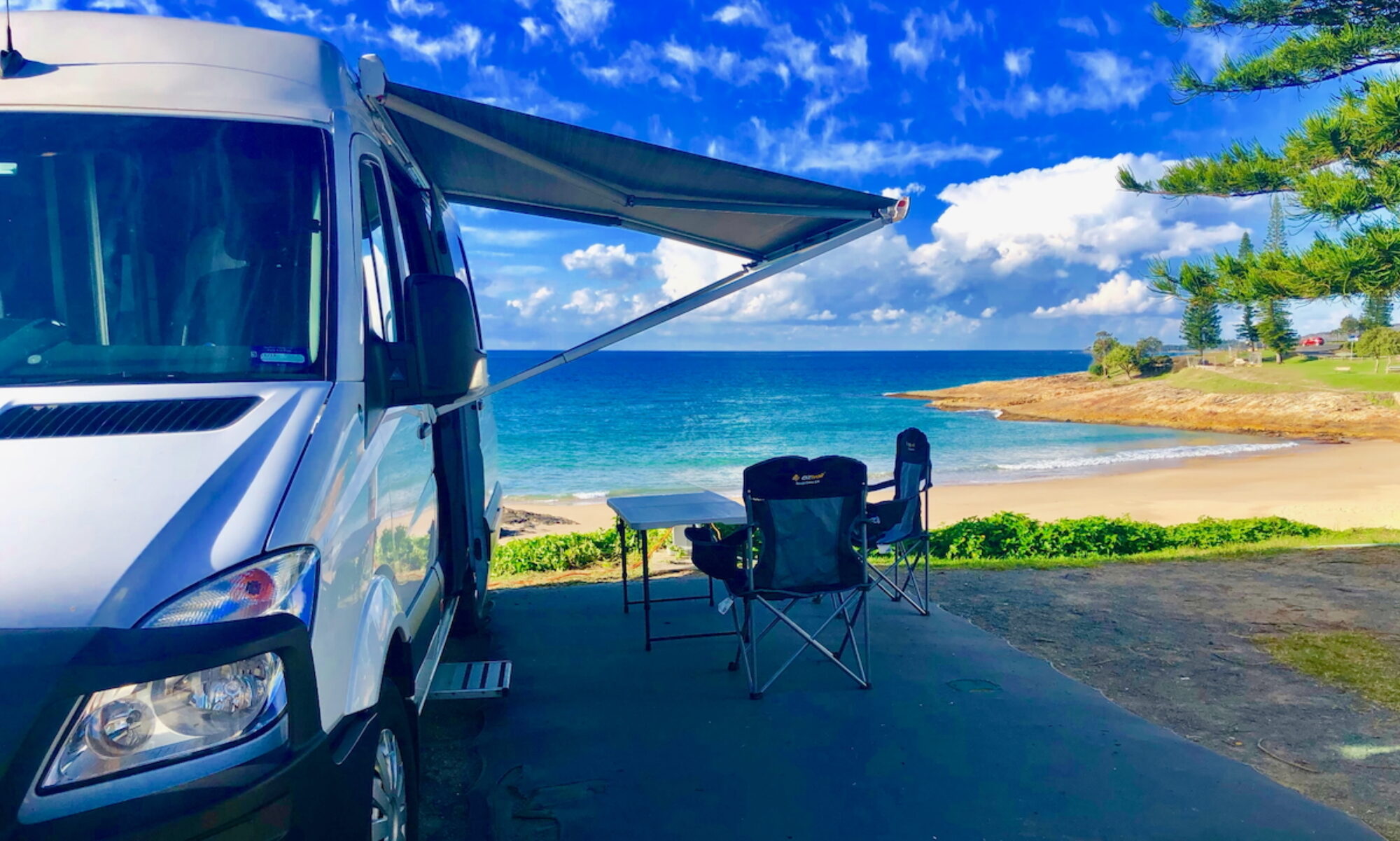Fit-out: Layout | Appliances | Accessories | Suppliers
See also: LPG vs Diesel Air Heaters
LPG is King?
 Back in the day, an LPG bottle (Liquified Petroleum Gas) was an essential item on the packing list for a camping trip. LPG was used to power most cooking and lighting appliances at the campsite.
Back in the day, an LPG bottle (Liquified Petroleum Gas) was an essential item on the packing list for a camping trip. LPG was used to power most cooking and lighting appliances at the campsite.
When we first moved into the Campervan world, the refrigerator was added to the list of appliances requiring an LPG supply. Heating was taken care of by a campfire, powered by timber collected in the local forest!
Fast forward to today and 12V electricity has taken over as our primary power source for lighting and refrigeration, LPG is still our go-to fuel source for cooking and hot water, while the living area of our van is warmed by a heater powered by Diesel drawn from the vehicle’s fuel tank.
So we now carry supplies for three separate fuel sources!
Fortunately it isn’t really as bad as it sounds….
-
- Our 12V power is supplied by deep-cycle batteries, automatically recharged by our solar panels (and the vehicle alternator while driving);
- Our ducted air heating is fuelled by Diesel supplied from the vehicle’s fuel tank;
- We still have our LPG bottle/s to power our 3 burner cooktop and Weber oven, and heat our hot water (which can also be heated using 230V AC electricity when available).
Over the past few years there has been an effort by Campervan and Motorhome manufacturers to rationalise energy supply, firstly by replacing LPG appliances with Diesel appliances, then more recently with appliances powered by 12V electricity.
Energy Alternatives
LPG has always been a reliable, efficient, and very popular stored energy source for Campervans and Motorhomes, albeit with some installation and general safety caveats. The development of new technologies has resulted in the availability of new appliances, with both Diesel and 12V appliances providing viable alternatives to LPG appliances. To some extent, Diesel’s role is boosted a little by the number of Campervans and Motorhomes already carrying Diesel fuel to supply power to the vehicle engine. Each energy source has pros and cons….
LPG…..
-
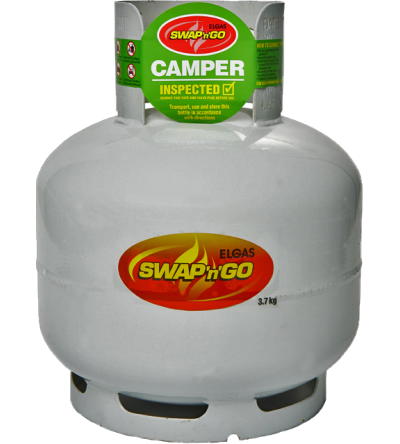 On the upside, LPG has a high calorific value compared to other fuels. (Calorific value is a measurement of the amount of energy/heat released for a given amount of fuel). LPG heat is instant.
On the upside, LPG has a high calorific value compared to other fuels. (Calorific value is a measurement of the amount of energy/heat released for a given amount of fuel). LPG heat is instant.- On the downside, LPG bottles consume storage space and payload capacity. LPG poses a potential safety risk from both plumbing leaks and exhaust fumes, and so requires certified installation and (in some states) regular inspection. And it is another on-board fuel supply that has to be regularly topped up.
Diesel…..
-
 On the upside, if your vehicle is Diesel-powered you already have a fuel supply that is topped up every time you fill your tank;
On the upside, if your vehicle is Diesel-powered you already have a fuel supply that is topped up every time you fill your tank;- On the downside, Diesel-powered appliances take longer to reach the same level of heat as LPG appliances. Some Diesel-fuelled appliances, such as air heaters, are a little noisier than their LPG equivalents.
12V electricity…..
-
 On the upside, 12V electricity is reliable and safe. A virtually infinite power supply is possible with a large battery and solar panel setup. A 12V electricity supply can be installed and maintained – and extended / expanded – by the average DIY Campervan enthusiast.
On the upside, 12V electricity is reliable and safe. A virtually infinite power supply is possible with a large battery and solar panel setup. A 12V electricity supply can be installed and maintained – and extended / expanded – by the average DIY Campervan enthusiast.- On the downside, some appliances – for heating and cooking in particular – require huge amounts of power, which in turn requires a very large battery and recharging infrastructure, which has a relatively expensive upfront cost.
A few years back, a number of manufacturers began building Campervans where all appliances, other than the 12V/230V fridge, were powered by fuel drawn from the vehicle’s main Diesel tank – cooking, heating and hot water. This was certainly an attractive proposition for those travelling in remote areas, where Diesel fuel is more readily available than LPG.
However, now that larger Lithium batteries and high-power inverters are more widely available, and increasingly affordable, along with efficient and affordable solar panels, we are seeing new Campervans and Motorhomes move to an all-electric environment, with induction cooktops and electric hot water heaters becoming a viable option.
 Heating applications – hot water, air heating and cooking – consume huge amounts of stored energy, so you do need a large and robust battery and charging system for this to be a viable option – 400-600Ah of battery capacity, and 600W of solar charging capacity. For the basic Campervan, with a 120-240Ah Lithium, we are not quite there yet!
Heating applications – hot water, air heating and cooking – consume huge amounts of stored energy, so you do need a large and robust battery and charging system for this to be a viable option – 400-600Ah of battery capacity, and 600W of solar charging capacity. For the basic Campervan, with a 120-240Ah Lithium, we are not quite there yet!
We are also advocates of not ‘putting all our eggs in one basket’. If one of our fuel sources is unavailable due to a technical issue, we have alternatives to temporarily fill the gap.
Methylated spirits (denatured alcohol) was a popular option for cooktops in the boating community for many years – it was considered to be safer than LPG in below-deck galleys. Metho was also an attractive cooktop option for DIY Campervan owners because no plumbing or certification is required to install a Metho-fuelled cooktop. And Metho cooktops are portable – you can easily move your cooktop outside when required. But all this is fading into the past as 12V electric options become more widely available.
When it comes to cooking and heating, LPG has a higher energy rating (calorific value) than alternative liquid fuels….
-
- Propane (LPG): calorific value = 50 MJ/kg
- Diesel: calorific value = 45 MJ/kg
- Methylated spirits: calorific value = 30 MJ/kg
Which means that these alternative liquid fuels take longer to reach a given level of heat output than LPG. Maybe waiting a little longer to boil water is OK when weighed against the space and payload capacity taken by LPG bottles, or the inconvenience of finding an LPG filling station.
 But with an eye on the future, all this discussion about alternative liquid fuels is probably somewhat irrelevant – appliances powered by easily renewable 12V electricity appear to be the way the industry is going as battery and solar recharging technologies advance. 12V electricity can still be a relatively expensive upfront option – though this is rapidly changing.
But with an eye on the future, all this discussion about alternative liquid fuels is probably somewhat irrelevant – appliances powered by easily renewable 12V electricity appear to be the way the industry is going as battery and solar recharging technologies advance. 12V electricity can still be a relatively expensive upfront option – though this is rapidly changing.
Options Galore
Below is a list of services provided by Campervan and Motorhome appliances and the fuel options available to run them. Despite the availability of alternatives, LPG remains a reliable and efficient option for most heating appliances…
| Refrigeration | LPG | 12V | 230V | ||
| Hot water | LPG | Diesel | 12V | 230V | |
| Cooking | LPG | Diesel | 12V | 230V | Metho |
| Air Heating | LPG | Diesel | 230V | ||
| Lighting | LPG | 12V |
Refrigeration
Fuel options….
| LPG | 12V | 230V |
12V/230V
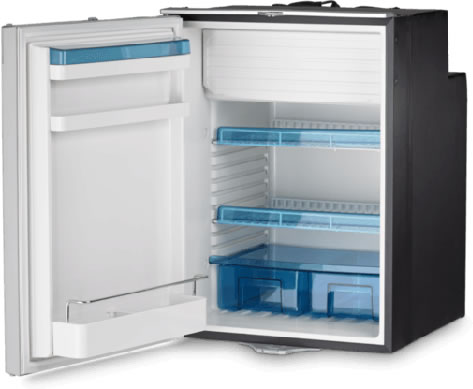 By far the most popular fridges for Campervans and Motorhomes are ‘compressor’ fridges, (also known as 2-way fridges) running on either 12V or 230V.
By far the most popular fridges for Campervans and Motorhomes are ‘compressor’ fridges, (also known as 2-way fridges) running on either 12V or 230V.
-
- Compressor fridges operate in a similar fashion to domestic refrigerators;
- Compressor fridges and freezers perform well at high ambient temperatures;
- Compressor fridges operate efficiently at angles up to 30º;
- 12V power is a continuously renewable energy source, providing you have an adequate battery and solar panel charging setup;
- 230V operation is available when staying in camp grounds.
LPG/12V/230V
‘Absorption’ fridges (also known as 3-way fridges) run on either 12V, 230V or LPG.
-
- Absorption fridges are a good option for long term off-grid camping, running on LPG rather than using 12V reserves;
- Must be run on 12V, not LPG, when travelling;
- Absorption fridges must be exactly level when operating;
- Heavy on battery consumption when running on 12V;
- 230V operation is available when staying in camp grounds.
Hot water
Fuel options…
| LPG | Diesel | 12V | 230V |
LPG/230V
 The most popular hot water heaters in Campervans and Motorhomes are those that are dual-powered by LPG and 230V.
The most popular hot water heaters in Campervans and Motorhomes are those that are dual-powered by LPG and 230V.
-
- Powered by LPG when free-camping;
- Powered by 230V when staying on a powered site.
- Water heats quickly: 20 – 30 mins
Diesel
 Diesel-powered hot water heaters are also readily available.
Diesel-powered hot water heaters are also readily available.
-
- In a small Campervan the water heater can be a combined unit with an air heater;
- Diesel heaters aren’t silent;
- In a combined HW/Air heater unit the water tank can take 90 minutes to reach a usable temperature if the air heater is also running.
 12V
12V
12V electric hot water heaters are a more recent option. (Eg – AusJ produce water heaters powered by 12V,)
-
- Likely to be a heavy drain on battery reserves;
- These units have relatively small tanks (6-10 litres);
- Require a robust renewable electricity supply.
Cooking
Fuel options…
| LPG | Diesel | 12V | 230V | Metho |
LPG
LPG is by far the most popular fuel for cooking in Campervans and Motorhomes.
-
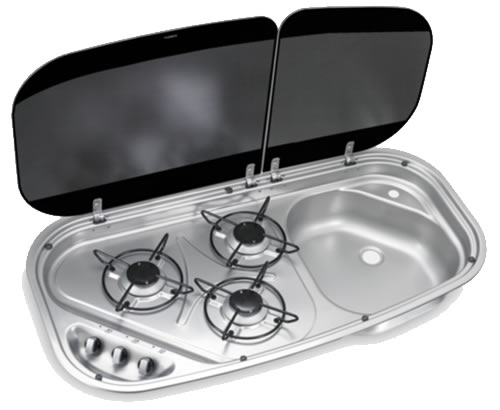 LPG cooking appliances provide Instant heat;
LPG cooking appliances provide Instant heat;- A wide range of cooktops, ovens and grills are available;
- A portable LPG bottle can be used to fuel external portable ovens – eg Weber BabyQ.
Diesel
A more recent cooking option is a Diesel-powered cooktop (eg- Webasto X100).
-
 These cooktops don’t have a flame, but two ceramic hot plates – a cooking plate and a warming/simmer plate – similar in appearance to modern domestic electric hot plates;
These cooktops don’t have a flame, but two ceramic hot plates – a cooking plate and a warming/simmer plate – similar in appearance to modern domestic electric hot plates;- No grill or oven facilities;
- No toasting (no open flame);
- I haven’t used one of these cooktops, but those who have advise that it can take 10 minutes for the hot plates to reach a usable cooking temperature.
12V/230V
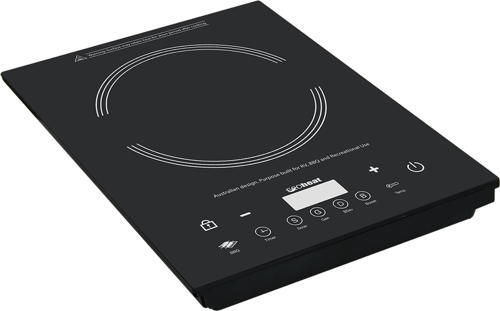 If you are staying mostly in campgrounds with mains power available, or you have a serious rechargeable battery setup, with an equally serious inverter, then an induction cooktop is becoming an increasingly popular option.
If you are staying mostly in campgrounds with mains power available, or you have a serious rechargeable battery setup, with an equally serious inverter, then an induction cooktop is becoming an increasingly popular option.
-
- Portable – can be used indoors/outdoors;
- Heats more quickly than LPG;
- Ideal for campsites with mains power;
- Requires a high-power inverter for off grid camping;
- Single plate models more suitable for 12V inverter operation;
- Requires compatible cookware;
 Many motorhomes have a microwave oven fitted, running from 230V mains power, or a high-output inverter when free-camping.
Many motorhomes have a microwave oven fitted, running from 230V mains power, or a high-output inverter when free-camping.
-
- Ideal for campsites with mains power available;
- Can be used with an inverter for 12V operation with suitable battery capacity and solar recharging facilities.
Methylated Spirits
Cooktops powered by Methylated Sprits have been around for a while, made popular in the boating community due to their safer operation than LPG below deck. They became popular for DIY Campervan fit-outs for similar reasons.
-
 Metho cooktops are easily installed – no plumbing or certification required;
Metho cooktops are easily installed – no plumbing or certification required;- Portable – a metho stove is not plumbed in, and can be easily removed from the van and used to cook outside;
- Metho stoves produce carbon dioxide, rather than carbon monoxide, so are (marginally) safer for indoors use;
- Methylated spirits is widely available and a 2 litre bottle will provide cooking fuel for a month (one meal per day).
Air Heating
Fuel options…
| LPG | Diesel | 230V |
Ducted air heaters are one of those more recent ‘glamping’ appliances that have become popular in modern Campervans and Motorhomes.
LPG
-
 LPG-fuelled ducted air heaters are efficient heaters for use in vehicles that already have an LPG installation and don’t have access to a Diesel fuel supply;
LPG-fuelled ducted air heaters are efficient heaters for use in vehicles that already have an LPG installation and don’t have access to a Diesel fuel supply;- Installation must be certified to meet regulatory requirements regarding location and plumbing integrity;
- Completely silent in operation.
Diesel
-
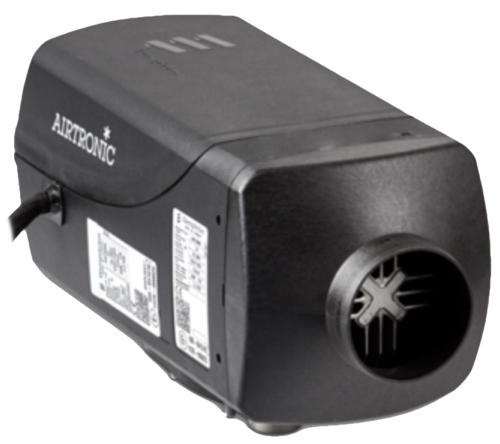 Diesel-fuelled ducted air heaters are the go-to option in Diesel-powered vehicles, drawing their fuel supply from the vehicle’s main fuel tank;
Diesel-fuelled ducted air heaters are the go-to option in Diesel-powered vehicles, drawing their fuel supply from the vehicle’s main fuel tank;- Every time you fill your fuel tank you top up your heater fuel supply;
- Can be heard outside the van when starting up, but very quiet once up to temperature;
- Consume around a litre of fuel if left running all night.
230V
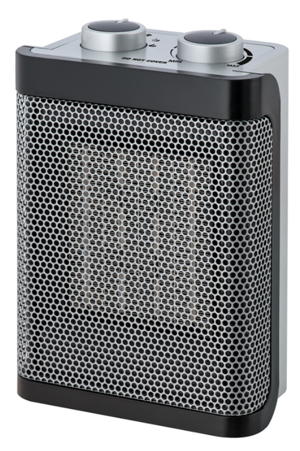 When staying in a campground and paying for a 230V power connection, a portable fan heater is an excellent heating option for the living area of a van;
When staying in a campground and paying for a 230V power connection, a portable fan heater is an excellent heating option for the living area of a van;
-
- Available in a variety of sizes;
- Cost is between $20 and $50;
- Doesn’t consume any of your on-board fuel supplies;
- Roof-top air-con is another option, but is noisy and less efficient (drawing warm air from the roof of the van).
Lighting
Power options…
| LPG? | 12V |
OK – LPG lanterns are still available for purchase at camping stores. No doubt these lights have a place in camp sites that don’t have access to rechargeable batteries. But any camping setup associated with a vehicle should have access to a renewable 12V power supply.
 The advent of powerful and efficient LED lighting has seen the demise of LPG as a lighting fuel source. Combined with affordable Lithium power packs and batteries, being recharged by equally affordable solar panels, lights of all shapes and sizes (and shades of all colours!) are now available to suit the most basic tent site all the way through to the most extravagant motorhome. (Yes, I recall the days of fitting an LPG lantern to a gas bottle – tying on the new mantle, ‘burning in’ the mantle while shielding the light from wind, and regularly replacing the lantern glass broken in transport!)
The advent of powerful and efficient LED lighting has seen the demise of LPG as a lighting fuel source. Combined with affordable Lithium power packs and batteries, being recharged by equally affordable solar panels, lights of all shapes and sizes (and shades of all colours!) are now available to suit the most basic tent site all the way through to the most extravagant motorhome. (Yes, I recall the days of fitting an LPG lantern to a gas bottle – tying on the new mantle, ‘burning in’ the mantle while shielding the light from wind, and regularly replacing the lantern glass broken in transport!)
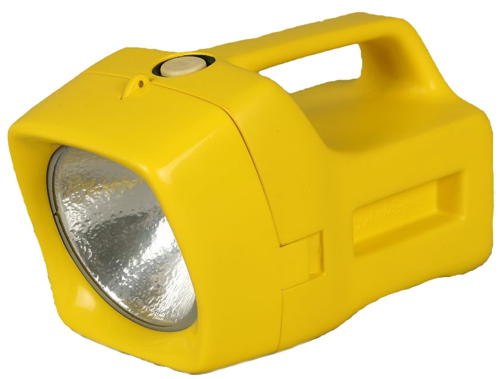 Remember the old Dolphin torches we lugged around with the massive 6V batteries? Modern torches blow away the old Dolphins in both light output and battery life – and they are a fraction of the size and weight.
Remember the old Dolphin torches we lugged around with the massive 6V batteries? Modern torches blow away the old Dolphins in both light output and battery life – and they are a fraction of the size and weight.
Motorhome parts suppliers stock a wide range of LED lights – strip lights, dome lights, touch lights, insect repelling lights, remote control lights, etc, etc. It is unlikely that any modern Campervan or Motorhome will have any lighting powered by LPG, or older incandescent lights powered by 230V.
The Bottom Line
 What is the best fuel source for your appliances? (How long is a piece of string?)
What is the best fuel source for your appliances? (How long is a piece of string?)
Horses for courses. Much depends on your travel style, your budget, your destinations and your needs.
-
- LPG remains a great all-rounder, and is especially good for cooking;
- Diesel is excellent for air heating, and uses a fuel source that is already installed in a diesel van;
- 12V power is the default option for refrigeration and lighting, and is becoming a much more viable option across all types of appliances (in conjunction with an inverter) as the cost of Lithium batteries decreases.
The reality at the bleeding edge is that it is now possible to run a Campervan or Motorhome entirely on 12V electricity. As 12V electrical systems (batteries and solar panels) become more efficient and affordable, a full electrical setup is easily achievable – you just need a large battery capacity, plenty of solar, and a large capacity inverter for off-grid excursions. All very do-able, but still relatively expensive.
However, LPG is still a great option, especially for cooking. Instant heat, ovens, grills, and general affordability make it hard to go past if you don’t mind carrying the storage bottles. If you already have a van with LPG installed there is certainly no need to swap everything over to 12V.
A combination of fuels is likely to continue powering Campervan and Motorhome appliances for the next few years at least, unless you have very specific needs. The next big rethink on the horizon for powering Campervan and Motorhome appliances will most likely be associated with the introduction of fully EV powered Motorhomes.
The all-electric Motorhome? Watch this space!
|
See also: |
Fit-out: Layout | Appliances | Accessories | Suppliers
